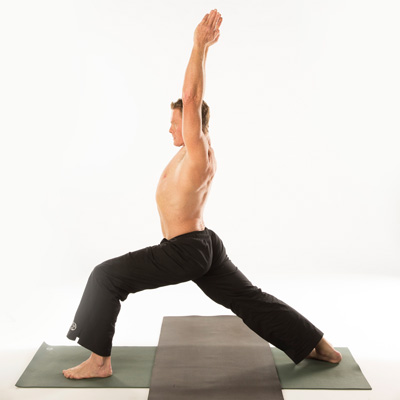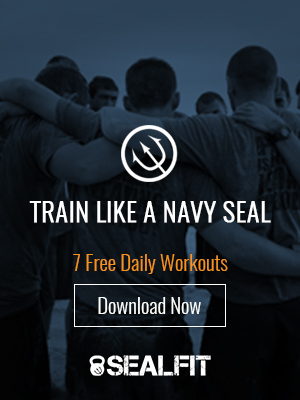Part 4 of the Warrior Yoga series
Warrior Yoga: An Adaptable Mind/Body/Spirit Practice (in more ways than one!)
by Mark Divine
In this series of posts, we’ve examined some of the benefits to be gained through a consistent yoga practice. Particularly how yoga can be at the heart of a Warrior’s daily rituals, rituals that, over time, will forge inner metals that will be priceless when you’re being tested during the pursuit of your goals.
Catherine Divine, my stepdaughter, is a yoga coach at SEALFIT and provided keen insight for the routines in my next book, Warrior Yoga. She often remarks that the worst excuse for not adopting a Warrior Yoga practice is the following:
I’m not flexible enough.
Indeed, this concern can have merit with certain approaches to specific varieties of yoga; classes where the teacher pressures students to push and funnel their bodies into some “perfect” execution of a pose.
Imagine a CrossFit athlete who is aware that a tight posterior chain and overall lack of mobility creates a drain on his capacity for athletic performance. A well-meaning teacher physically pressing this athlete into certain poses may do more harm than good, sending him away from the studio with a freshly torn hamstring.
In Warrior Yoga, I don’t subscribe to the belief that the body must be contorted into some perfect ideal. There’s no demand being made that you have to funnel your body into a picture-perfect position, or be able to execute a handstand that rewards you with a perfect 10 score. It’s my position that such a mindset often leads to frustration, injury or both.
In Warrior Yoga, we flip this line of thinking around into a more elastic construct. Rather than adapting your body to a pose, we want to adapt the pose to what our body is ready for and capable of. We want to fit the pose to the body, not the body to the pose.
Many influences are at play in regards to what this capacity is. Did you just finish a 20-mile ruck? Or a SEALFIT training session with heavy squatting? Was today an exceptionally stressful day at work?
In Warrior Yoga, we want you to take this all into account: Who you are today and what you are dealing with. Do you have old injuries that need to be considered? Or mobility restrictions? How does your age and experience impact your pose? All of these factors, and more, have a tremendous effect on what positions will be best for you to work with in your daily practice.
We don’t advise this pliability so that you can dog it; to get the best results, it’s important to tune into your body and strive to make an improvement. But know that it is fine to not be “perfect” and to leverage the use of tools, like a folded blanket or a yoga block, to assist you into getting into a version of a pose that’s right for you on this day of training.
This is the Warrior Yoga principle of adaptation in play. And guess what? Over time, practised consistently, approaching a yoga practice by fitting the poses to your body (as opposed to forcing your body into positions you’re not ready for) will achieve mobility gains that may shock you. Consider me: As anyone who’s put years of service in on a SEAL Team can tell you, the demands of the job can be extremely hard on the joints and body. My background also includes the muscle-shortening endurance grind, as a triathlete and runner. Add to that the combat pounding involved as a black belt in the martial arts. Yet despite all of these miles on the odometer, my yoga training has me at my lifelong best when it comes to mobility, balance and deep core strength.
Another defining construction of Warrior Yoga also concerns adaptability: It’s built on a flexible platform so that you can mold a session into the framework of your day, no matter how busy.
The Warrior Yoga routines have an accordion-like nature to them. If you have 90 minutes for a full session, great, you can include an array of modules from meditation to combat-conditioning to the the entire prescription of poses, but if your schedule becomes overrun by work and family commitments, you can pare down the sequence to fit the time block you do have–even if it’s just five or ten minutes.
I designed Warrior Yoga with these two foundational ingredients because that’s what’s worked well for me, both inside and outside of a combat zone. If the rewards of a Warrior Yoga practice sound good to you—emotional resilience, concentration skills, intuition, presence, the mastery of breathing and a strong core being among them—then two things that aren’t stopping you are a lack of flexibility in either your body or your schedule.
Next week we’ll take a deeper look into what I mean by core strength as we discuss more of the direct physical benefits of Warrior Yoga.
Train hard—
Mark Divine
Leave a Reply cancel reply
You must be logged in to post a comment.



No Comments